Popular categories
Looking for a yarn?
Rendelés Kötőtűk & Horgolótűk
Ha a RENDELÉS gombra kattint a Nordfonal.hu oldalára irányítjuk át
A fonalköltséget a minta legkisebb méretéhez, és a legolcsóbb fonalból számoljuk. Még jobb árat keres? Itt megtalálhatja: DROPS Deals!
Pretty Peach Shawl
Kötött kendő DROPS Sky fonalból. A darabot oldalirányban készítjük, rizsmintával.

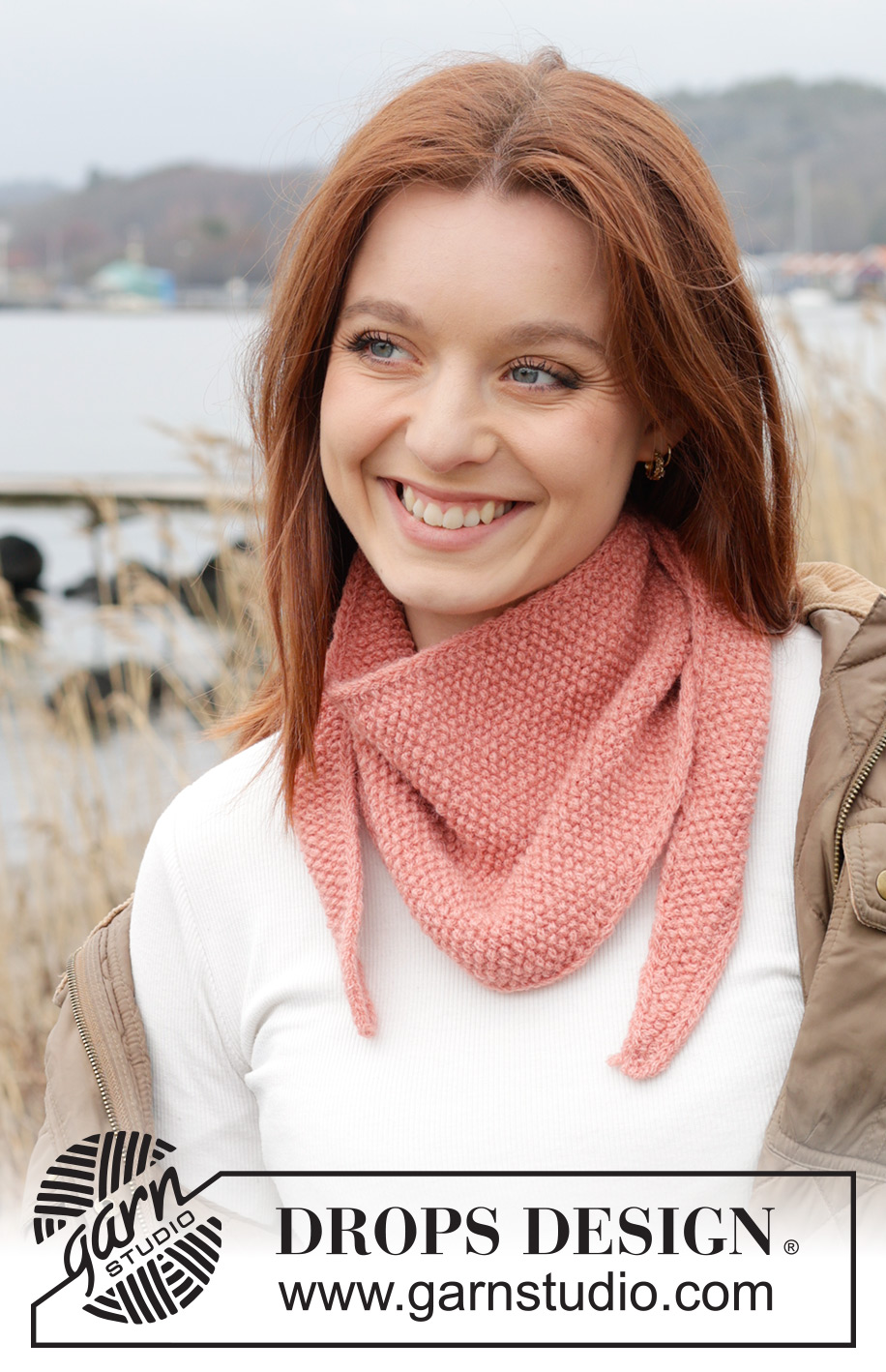
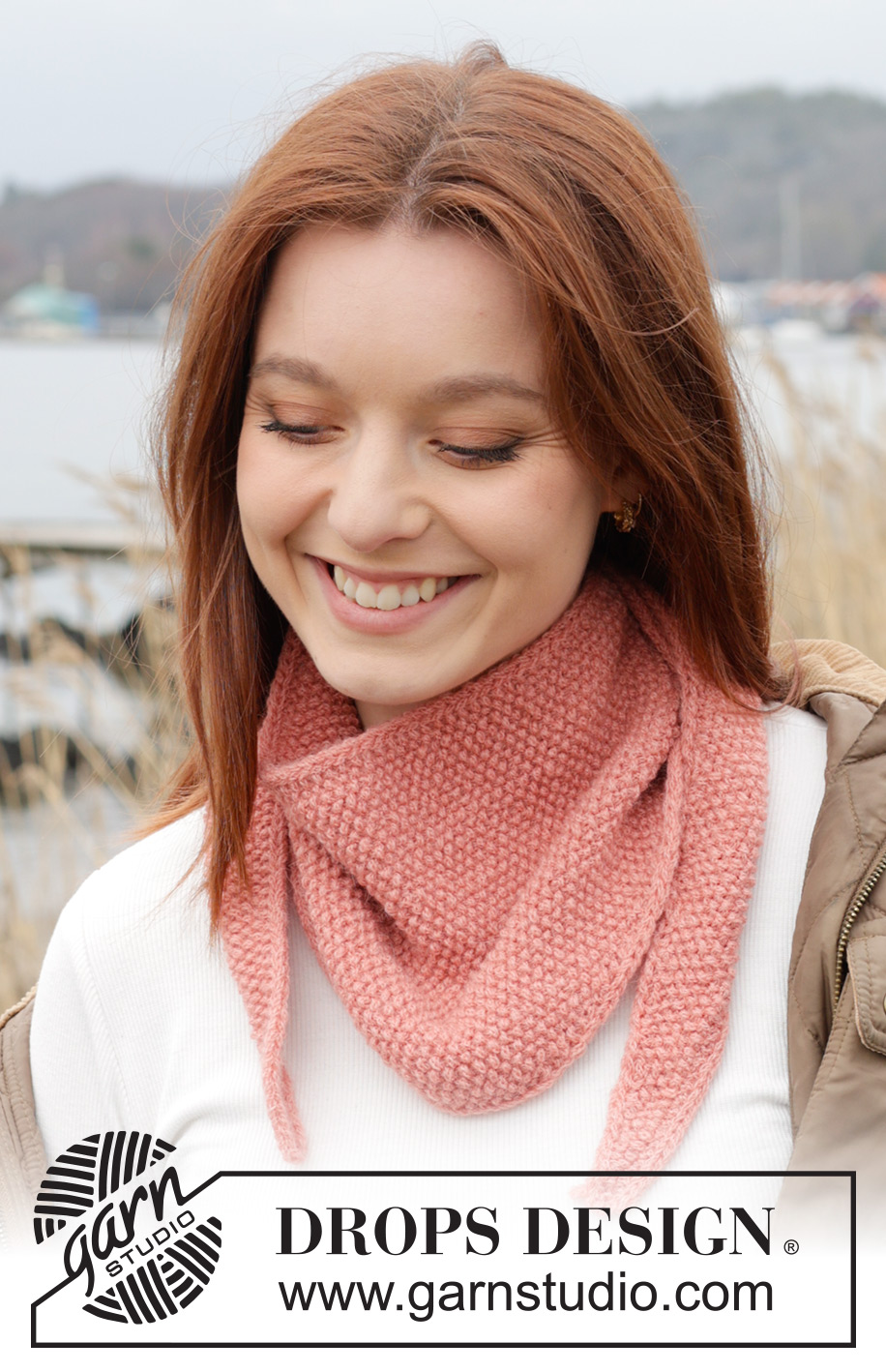
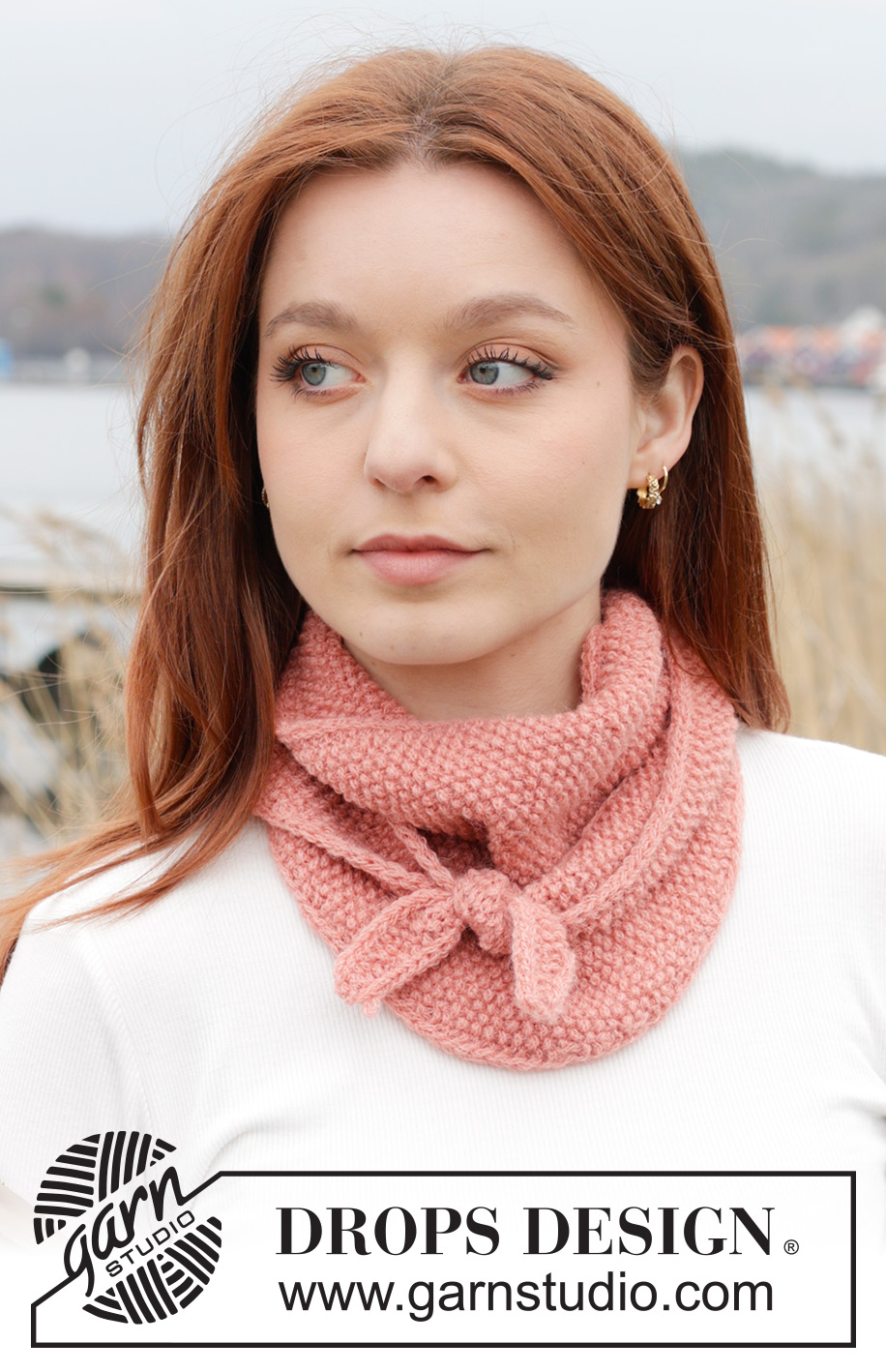
Pretty Peach Shawl / DROPS 242-21
Változtassa a nyelvet:
Magyar#prettypeachshawl
DROPS design: sk-187 jelű mintaB fonalcsoport
----------------------------------------------------------
MÉRET:
Magasság: Magassága a közepén mérve = kb 21 cm.
Szélesség: A felső szélén mérve = kb 119 cm.
FONAL:
DROPS SKY fonal a Garnstudiótól (a B fonalcsoporthoz tartozik)
100 gramm a 19 sz. barack színből
KÖTŐTŰ:
DROPS KÖRKÖTŐTŰ: 4 MM VASTAG Hossza: 40 cm.
A KÖTÉSPRÓBA:
21 szem egymás mellett és 34 sor egymás fölött a rizsmintával = kb 10 x 10 cm.
MEGJEGYZÉS: Ne feledkezzünk meg arról, hogy a kötőtű mérete csak ajánlás. Mindig készítsünk, és ellenőrizzük a kötéspróbát. Ha a 10 cm-n túl sok szemünk van, váltsunk nagyobb kötőtűre. Ha a 10 cm-n túl kevés szemünk van, váltsunk kisebb kötőtűre.
-------------------------------------------------------
Választható más fonalak – Nézze meg hogyan helyettesítheti be a fonalat ITT.
A_F fonalcsoportok – Használja ugyanazt a mintát és helyettesítse be a fonalat ITT.
Fonalhasználat más, behelyettesített fonalnál – Hazsnálja a fonalátváltónkat.
-------------------------------------------------------
Ez is tetszhet még...
Rendelés Kötőtűk & Horgolótűk
Ha a RENDELÉS gombra kattint a Nordfonal.hu oldalára irányítjuk át
A fonalköltséget a minta legkisebb méretéhez, és a legolcsóbb fonalból számoljuk. Még jobb árat keres? Itt megtalálhatja: DROPS Deals!
Mintaleírás
Szaporítás/Fogyasztás KalkulátorTANÁCSOK A MINTA ELKÉSZÍTÉSÉHEZ:
----------------------------------------------------------
SZÉLSZEMEK:
A sorok elején a 2 szélszemet a köv módon kössük:
1 szemet F leemelünk, a szál a munka előtt, kössünk 1 S szemet.
A sorok végén a 2 szélszemet a köv módon kössük:
Kössünk, amíg a 2 szélszem marad a sorban, 1 szemet F leemelünk, a szál a munka előtt, kössünk 1 S szemet.
Minden sor elején és végén így haladjunk.
RIZSMINTA (oda-vissza haladva - síkban - kötve).
1.sor: * 1 sima, 1 fordított. * Ismételjük a *-* közötti részt
2.sor: A fordított szemeken sima szemekkel, a sima szemeken fordított szemekkel kötünk.
Ismételjük a 2. sort
----------------------------------------------------------
A MINTALEÍRÁS ITT KEZDŐDIK:
----------------------------------------------------------
KENDŐ: RÖVID ÖSSZEFOGLALÓ
A darabot körkötőtűn kötjük oda-vissza haladva, oldalirányban.
KENDŐ:
A kezdéshez szedjünk fel 5 szemet a 4 mm vastag körkötőtűre a DROPS Sky fonalból. Olvassuk el a fenti tanácsot a SZÉLSZEMEKről!
1. sor (= SZO) Kössünk 2 SZÉLSZEMET - olvassuk el a fenti magyarázatot, 1 sima, és a 2 szélszem.
2. sor (= FO): Kössünk 2 SZÉLSZEMET - olvassuk el a fenti magyarázatot, 1 sima, és a 2 szélszem.
3. sor (= SZO) Kössünk 2 SZÉLSZEMET, 1 rh, 1 sima, és a 2 szélszem. A következő sorban a ráhajtást csavartan kötjük, így a helyükön nem keletkezik lyuk.
4-7. sor: Kössük a 2 szélszemet. Kössünk a rizsmintával - olvassuk el a fenti magyarázatot, amíg 2 szem marad a sorban, és a 2 szélszemmel fejezzük be a sort.
8. sor (= FO): Kössük a 2 szélszemet, rizsminta, amíg 2 szem marad rh, és a 2 szélszem. A következő sorban a ráhajtást csavartan kötjük, így a helyén nem keletkezik lyuk.
9-12. sor: Kössük a 2 szélszemet, rizsminta, amíg 2 szem marad rh, és a 2 szélszem.
13. sor (= SZO) A2 szélszem, 1 rh, kössünk a rizsmintával amíg 2 szem marad a sorban, és a 2 szélszemmel fejezzük be a sort. A következő sorban a ráhajtást csavartan kötjük, így a helyükön nem keletkezik lyuk.
Ismételjük az 4 - 13. sorokat. Szaporítsunk minden 5. sorban, felváltva szaporítunk a SZO és a FO felől. mindkét oldalon 2 szélszemmel, miközben, középen, a rizsmintával kötött szemek száma szaporodik. NE FELEDKEZZÜNK MEG A MEGFELELŐ KÖTÉSPRÓBA BETARTÁSÁRÓL!
Amikor a darabunk kb 58 cm-es a kezdőszéltől, kb 21 cm-es lesz a közepén mérve (és kb 44 szemünk lesz a sorban a kötőtűnkön)., Folytassuk a rizsmintával és a 2-2 szélszemmel, mndkét oldalon, de további szaporítások nélkül, 3 cm-ig.
Folytassuk a rizsmintával és a szélszemekkel, a korábbiak szerint, ugyanakkor, a 2 szélszem mellett, ugyanazon az oldalon, ahol korábban szaporítottunk, most fogyasszunk. Ezután fogyasszunk minden 5. sorban, felváltva a SZO és a FO felől, a köv módon:
Kössünk 2 szélszemet lustakötéssel, 1 szemet S leemelünk, 1 sima, a leemelt szemet a lekötött szemet átemeljük szemet fogyasztottunk), kössünk a rizsmintával, amíg 2 szemünk marad, kössük a 2 szélszemet-
Kössünk a korábbiak szerint, és fogyasszunk a fentieknek megfelelően, amíg 5 szemünk marad a sorban. Kössünk 2 sort sima szemekkel fogyasztás nélkül, és lazán láncoljuk le a szemeket. A darabunk körülbelül 119 cm-es lesz.
Minden mintánkhoz tartoznak oktató-videók, amik segítenek.
These step-by-step tutorials might also help you:
Miért olyan fontos a kötés/horgoláspróba betartása?
A kötéspróba határozza meg a munkadarabunk végső méretét, általában 10 x 10 cm-ben mérjük. A következő módon adjuk meg: A szemek száma egymás mellett x a sorok száma egymás fölött- vagyis: 19 szem x 26 sor = 10 x 10 cm.
A kötés/horgoláspróba mindenkinél egyéni: egyesek lazábban dolgoznak, mások szorosabban. A kötéspróbán a kötő/horgolótű méretének változtatásával tudunk igazítani, ezért van az, hogy a javasolt tűméretet csak ajánlásnak szánjuk! A kötő/horgolótű méretének ellenőrzésével, esetleges cseréjével tudjuk biztosítani, hogy a SAJÁT kötéspróbánk megfeleljen a mintában megadottnak. Ha a mintában megadott kötés/horgoláspróbától eltérünk, a felhasznált fonalmennyisége változhat, és a kész darabunk mérete is eltérő lesz a mint a mintában megadott.
Honnan tudom, hány gombolyag fonalra lesz szükségem?
A szükséges fonalmennyiséget grammban adjuk meg, például: 450 gramm. Ahhoz, hogy ki tudjuk számolni, hány gombolyagra lesz szükségünk, tudnunk kell hány gramm fonal van egy-egy gombolyagban (ez általában 25 gramm, 50 gramm vagy 100 gramm). Ezt az adatot megtudhatjuk, ha az oldalainkon az adott fonaltípusra kattintunk. A minta elkészítéséhez szükséges fonalmennyiséget osszuk el az egy-egy gombolyagban található fonalmennyiségével, Például, ha egy gombolyagban 50 gramm fonal van, akkor így számolunk: 450/50 = 9, vagyis 9 gombolyagra lesz szükségünk.
Használhatok a mintában megadottól eltérő fonalat?
Amikor egy adott fonalat egy másikra cserélünk az a legfontosabb, hogy a kötés/horgoláspróba ugyanaz maradjon, így az elkészült darabunk mérete akkora lesz, mint a mintában található mintarajz méretei. Könnyebben tarthatjuk be a megadott kötés/horgoláspróbát, ha ugyanabból a fonalcsoportból használunk másik fonalat. Egy vastagabb fonal kötéspróbáját több szál, vékonyabb fonal összefogásával is elérhetjük. . Kérjük, próbálja ki a fonal-átváltónkat.r.Javasoljuk hogy mindig készítsen próbadarabot!.
Kérjük, ne feledje: mivel minden fonalunk más-más tulajdonságú, fonalváltásnál előfordulhat, hogy az elkészült darab a fotón látottól eltérő lesz.
Fonalcsoportok - Mik ezek, és hogyan használjuk őket?
A fonalakat vastagságuk, és a velük elérhető kötéspróba szerint csoportokba rendeztük, így könnyebben találhat mintát a kedvenc fonalához. Vagy könnyebben találhat egy mintához fonal-alternatívákat. Az ugyanabban a fonalcsoportban levő fonalak hasonló kötéspróbát adnak, így egymással behelyettesíthetőek. Azonban, ettől függetlenül a minőségük, a struktúrájuk eltérő, így az elkészült darab különleges és egyedi lesz. Az egyes fonalcsoportok áttekintéséhez kattintson ide!.
A fonalcsoport = a csoporton belül minden fonallal 26 -23 szemet tudunk 10 cm-en kötni.
B fonalcsoport = a csoporton belül minden fonallal 22 -20 szemet tudunk 10 cm-en kötni.
C fonalcsoport = a csoporton belül minden fonallal 19 -16 szemet tudunk 10 cm-en kötni.
D fonalcsoport = a csoporton belül minden fonallal 15 -12 szemet tudunk 10 cm-en kötni.
E fonalcsoport = a csoporton belül minden fonallal 11 -9 szemet tudunk 10 cm-en kötni.
E fonalcsoport = a csoporton belül minden fonallal 8 -5,5 szemet tudunk 10 cm-en kötni.
Amennyiben több szál fonalat összefogva szeretne dolgozni, ehhez a következőket érdemes tudni: A C fonalcsoport 1 szálával hasonló kötéspróbát tudunk készíteni, mint az A. fonalcsoport 2 szálát összefogva, Az A fonalcsoportból tehát bármely fonalból 2 szálat, vagy bármely 2 fonalból 1-1 szálat összefogva megfelel a C fonal 1-1 szálának, ezt a mintákban így jeleztük: A + A = C.
Az alábbiakban áttekintjük, hogyan működnek a fonalaink, ha 1 szálnál többel dolgozunk:
2 szál az A fonalcsoportból megfelel a C fonalcsoport 1 szálának. Ezt a mintában így jeleztük: A + A = C
3 szál az A fonalcsoportból megfelel a D fonalcsoport 1 szálának. Ezt a mintában így jeleztük: A+A+A = D
4 szál az A fonalcsoportból megfelel az E fonalcsoport 1 szálának. Ezt a mintában így jeleztük: A + A+A+A = D
8 szál az A fonalcsoportból megfelel az F fonalcsoport 1 szálának. Ezt a mintában így jeleztük: A+A+A+A +A+A+A+A = F
2 szál az B fonalcsoportból megfelel a D fonalcsoport 1 szálának. Ezt a mintában így jeleztük: B+B =D
2 szál a C fonalcsoportból megfelel az E fonalcsoport 1 szálának. Ezt a mintában így jeleztük: C+C = E
4 szál a C fonalcsoportból megfelel az F fonalcsoport 1 szálának. Ezt a mintában így jeleztük: C+C+C+C = F
2 szál az E fonalcsoportból megfelel az F fonalcsoport 1 szálának. Ezt a mintában így jeleztük: E+E= F
A fonalak ilyen cseréjével új minőségeket, új struktúrákat érhetünk el, a választott kombinációktól függően. Kifejlesztettünk egy fonal-kalkulátort, amivel kiszámolhatja, mennyi fonalra van szüksége, ha 1 szál fonal helyett 2 vagy több szál kombinációját választja. A kalkulátorhoz a linket minden minta oldalán megtalálja. Ne feledje, hogy a megadott kötéspróba határozza meg, melyik fonalakat használhatjuk. Feltétlenül készítsünk próbadarabot a választott fonalkombinációval, és ellenőrizzük, hogy be tudjuk-e tartani a megfelelő kötéspróbát.Hogyan használhatom a fonal-átváltót?
Minden mintánk tetején talál linket a fonal-átváltónkhoz, ami segítséget nyújt, ha a mintában megadottól eltérő fonalat szeretne használni. A cserélni kívánt fonalat, a méretünkhöz szükséges fonalmennyiséget és a szálak számát megadva, a fonal átváltó megadja, milyen más, hasonló kötéspróbát adó lehetőségek közül választhat. Azt is megmondja, hogy az új típusból milyen mennyiségre van szükség, és kell-e több szálat használnunk egyszerre. A legtöbb gombolyagunk 50 grammos (némelyik 25 vagy 100 grammos).
Ha a mintában több színt használunk, minden színt külön ki kell számolnunk. Ugyanígy, ha a mintát több, különböző típusú fonalból készítjük (például 1 szál Alpaca és 1 szál Kid Silk fonalból), akkor mindegyikhez külön-külön kell alternatívát keresnünk.
Miért adnak meg már nem gyártott fonalakat egyes mintákban?
Mivel a különböző fonalak tulajdonságai, struktúrája eltér, úgy döntöttünk, hogy a mintáinkban megtartjuk azt az eredeti fonalat, amihez az adott mintát terveztük. Ugyanakkor, a most is elérhető fonalaink között könnyen találhat megfelelő alternatívát, ha a fonal-átváltónkat használja, vagy ugyanabból a fonalcsoportból választ ma is gyártott típust.
Az is előfordulhat, hogy egy-egy kereskedőnél még van a már nem gyártott fonalból készlet, vagy valakinek a saját készleteiben lapul olyan gombolyag, amihez szeretne mintát találni.
The a fonal átváltó segít alternatív fonalat keresni és kiszámolni az új típusból szükséges fonalmennyiséget.
Melyik méretet készítsem?
Ha úgy gondolja, nehéz eldönteni, melyik méretet készítse, jó ötlet, ha megmér egy hasonló típusú, már meglevő, kényelmes darabot, aminek a méretét jónak találja, és ennek a darabnak a méreteit összehasonlítja a diagramon megadott méretekkel.
A rajzot a méretekkel a minták alján találja..
Nézze meg a következő DROPS leckét: Hogyan olvassuk a méretrajzot?
Miért nem kapom meg a megfelelő kötés/horgoláspróbát a javasolt tűmérettel?
A mintákban megadott tűméret csak javaslat, a fontos, hogy a megadott kötés/ horgoláspróbát tartani tudjuk. Mivel mindenki más kötéspróbával dolgozik, előfordulhat, hogy más méretű tűvel kell dolgoznunk, hogy a minta kötés/horgoláspróbáját be tudjuk tartani- akár 1-2 mérettel kisebb vagy nagyobb kötőtűre is szükség lehet, hogy a megfelelő kötés/horgoláspróbát elérjük. Ezért azt tanácsoljuk mindig készítsen próbadarabot.
Ha a mintában megadottól eltérő kötés/horgoláspróbával dolgozik, az elkészült darab méretei eltérhetnek a méretrajzon megadottaktól.
Olvassa el a következő DROPS leckét: Hogyan mérjük a kötés/horgoláspróbát?
Olvassa el a következő DROPS leckét: Hogyan készítsünk próbadarabot a kötéspróba ellenőrzéséhez?
Miért kötünk egyes mintákat fentről lefelé haladva?
Ha egy darabot fentről lefelé haladva készít, lehetősége lesz arra, hogy rugalmasabban kezelje a mintát, és a saját alkatára, méreteire igazítsa. Például könnyebb munka közben felpróbálni a darabot, és a vállrész hosszán változtatni.
A mintaleírások minden lépést elmagyaráznak, a megfelelő sorrendben. A diagramokat a kötés irányénak megfelelően adjuk meg, és a szokásos módon olvassuk őket.
Hogyan kell egy diagram szerint dolgoznom?
A diagram minden sort/kört és minden szemet a színe oldal (SZO) felől nézve mutat jobbról balra. 1 négyzet = 1 szem.
Amikor oda-vissza haladva (síkban) dolgozunk, minden 2. sort a színe oldal felől, minden 2. sort pedig a fonákoldal felől kötünk, ezért a diagramot át kell fordítanunk: balról jobbra haladva olvassuk, a sima szemeket fordított szemekkel kötjük, a fordított szemeket sima szemként, stb.
Amikor körbenhaladva dolgozunk, minden kört a színe oldal felől kötünk, és minden körben jobbról balra haladva dolgozunk.
Olvassuk el a következő DROPS leckét: Hogyan olvassuk a kötésminták diagramjait?
Hogyan dolgozzak egy horgolásminta diagramja alapján?
A diagram minden sort/kört és minden szemet a színe oldal felől ábrázol. Alulról felfelé, jobbról balra haladva olvassuk.
Amikor oda-vissza haladva dolgozunk, minden 2. sort a színe oldal felől készítünk, jobbról balra haladba, és minden 2. sort a fonákoldal feéá, ekkor a diagramot balról jobbra haladva kell olvasnunk.
Amikor körben haladva dolgozunk, a diagramminden sorát a színe oldal felől köjük, a diagramot jobbról balra haladva olvassuk.
Amikor kör alakban dolgozunk, a darab közepén kezdünk, és onnan kifelé haladunk, az óra járásával ellentétes irányban, sorról sorra.
A sorok általában adott számú láncszemmel kezdődnek (a következő szem magasságának megfelelően), ezt vagy belerajzoljuk a diagramba, vagy elmagyarázzuk a mintában.
Olvassuk el a következő DROPS leckét: Hogyan olvassam a horgolási diagramokat?
Hogyan készítek egyszerre zöbb diagramot ugyanabban a sorban / körben?
ha egy körben/ sorban egymás mellett több, különböző diagram mintáját készítjük, a mintaleírásban gyakran ezt látjuk: "kössük az A.1 jelű mintát, A.2, A.3 jelű mintát összesen 0-0-2-3-4 alkalommal." Ez azt jelenti, hogy elkészítjük az A.1 jelű mintát egyszer, majd az A.2 jelű mintát egyszer, az A.3 jelű mintát ismételjük egymás mellett annyiszor, amennyit a minta a méretünkben megad, ebben az esetben: S méretben = 0 alkalommal, M méretben = 0 alkalommal, L méretben = 2 alkalommal, XL méretben = 3 alkalommal és XXL méretben = 4 alkalommal.
A diagramokat a szokásos módon készítjük: Az A.1 jelű minta első sorával kezdünk, utána az A.2 jelű minta első sorát készítjük, stb.
Olvassuk el a következő DROPS leckét: Hogyan olvassam a kötésminta diagramokat?
Olvassuk el a következő DROPS leckét: Hogyan olvassam a horgolásminták diagramjait?
Miért rövidebbek a nagyobb méretekhez készített ujjak?
A darabok teljes szélessége (csuklótól csuklóig) a nagyobb méretekben nagyobb lesz, annak ellenére, hogy magukat az ujjakat rövidebbre készítjük. A nagyobb méretek válla szélesebb, az ujjak felső íve hosszabb, így minden méretben jól illenek az adott alkatra.
Hol mérjük egy-egy darab hosszát?
A méretrajz adatokat tartalmas a darab teljes hosszáról. Ha ez egy pulóver, vagy kardigán, a hosszát a váll legmagasabb, a nyakkivágáshoz legközelebb eső, pontjától mérjük, a darabon egyenesen lefelé. NEM a vállcsúcstól. Ugyanígy a vállrészek hosszát is a váll legmagasabb pontjától mérjük addig a pontig, ahol szétválik a testre és a két ujjára.
Egy kardigán hosszát, soha nem a gomboláspántján mérjük (kivéve, ha ezt a minta külön kiemeli), A kardigán hosszát mindig a pánt mellett mérjük.
Olvassuk el a következő DROPS leckét: Hogyan olvassuk a méretrajzot?
Mi az egy "ismétlés"?
A diagramok mintáját gyakran ismételjük egymás mellett vagy egymás fölött. 1 ismétlés, amit a diagram rajzán látunk. Ha a minta azt mondja, készítsünk 5 ismétlést egymás mellett a körben az A.1 jelű mintából, akkor az A.1 jelű minta szemeit 5 alkalommal ismételjük egymás után/egymás mellett a körben. Ha a minta azt mondja, ismételjük az A.1 jelű minta sorait 2 alkalommal egymás fölött, akkor elkészítjük egymás fölött a minta sorait egyszer, majd elölről kezdjük, és újra elkészítjük a minta sorait még egyszer..
Miért kezdünke gy darabot több láncszemmel, mint ahány szemmel később dolgozunk benne?
A láncszemek (lsz-ek) valamivel keskenyebbek, mint a több szem, így ahhoz, hogy elkerüljük, hogy a kezdőszélünk túl szoros legyen, a kezdőszélen több lsz-t horgolunk. A szemek számát a következő sorban a mintarajz méreteinek és a mintának megfelelően igazítjuk.
Miért szaporítunk a bordásmintás szegély előtt egy fentről kezdett darabnál?
A bordásminta rugalmasabb, és pl. a harisnyakötéshez képest kissé összehúzódik. A bordásminta előtti szaporítással elkerülhetjük, hogy a testrész és a bordásmintás szegély között látható különbség legyen.
Miért szaporítunk a leláncolt szélben?
A leláncolást könnyen készíthetjük túl szorosra. Ha a leláncolás közben rendszeres közönként ráhajtást iktatunk be, amint rendes szemként leláncolunk, elkerülhetjük, hogy a leláncolt szélünk túl szoros legyen..
Nézzük meg a következő DROPS videót: Hogyan lándoljunk le ráhajtásokkal (rh-sokkal)?
Hogyan szaporítsak/fogyasszak felváltva minden 3. és 4. sorban / körben?
Egyenletesen szaporíthatunk vagy fogyaszthatunk, ha felváltva kell például minden 3. és minden 4. sorban/körben szaporítanunk/fogyasztanunk. Ezt úgy csináljuk: két sort készítünk, a harmadik sorban szaporítunk, készítünk újabb 3 sort és a 4. sorban szaporítunk, majd ismételjük a fentieket, amíg minden szaporítást elkészítettünk.
Olvassuk el a következő DROPS leckét: Szaporítsunk vagy fogyasszunk 1 szemet felváltva minden 3. és 4. sorban .
Hogyan köthetek oda-vissza haladva helyett körben egy kardigánt?
Ha valaki oda-vissza haladva helyett körben szeret kötni, természetesen módosíthatja a mintát. Az eleje közepéhez a felvágáshoz (a steek-hez) szemeket kell adnunk általában 5 szemet). Amikor alapesetben (oda-vissza haladva) megfordulnánk, egyszerűen tovább kötünk, lekötjük a steek szemeit, és körben haladva folytatjuk. Végül a steek szemei közepén elvágjuk a darabot, szemeket szedünk fel a pántokhoz, és eltakarjuk a vágott széleket.
Nézzük meg a következő DROPS videót: Hogyan kötjük és vágjuk fel a steek szemeit?
Tudok körben haladva helyett pulóvert oda-vissza haladva kötni?
Ha a körben haladva helyett inkább oda-vissza haladva szeretnénk egy darabot kötni, természetesen módosíthatjuk a mintát, és a darabokat külön-külön készítjük el, majd végül összevarrjuk. A testrész szemeinek számát osszuk el kettővel, adjunk hozzá mindét oldalon 1-1 szélszemet (az összevarráshoz), és az eleje és háta darabot kössük meg külön-külön.
Olvassuke l a következő DROPS leckét:: Tudok körkötőtűre iírt mintát egyenes kötőtűre adaptálni?
Miért térhet el egy minta a fotótól?
A mintaismétlések a különböző méretekben eltérhetnek, hogy végül a megfelelő arányokat és méreteket kapjuk. Ha nem pontosan ugyanazt a méretet kötjük, mint ami a fotón van, néhány apró részletben kissé eltérhet a saját méretünkben készített darab. A mintákat gondosan dolgozzuk ki és igazítjuk, hogy minden méretben hasonló hatást érjünk el.
Ügyeljünk arra, hogy a méretünknek megfelelő leírást kövessük!
Hogyan készíthetek el egy női méretekre tervezett darabot férfiaknak való méretben?
ha találtunk egy női mértekben elérhető darabot, ami tetszik, nem túl bonyolult átalakítani férfi méretre. A legnagyobb különbség az ujjak és a test hossza lesz. Kezdjük azzal a mérettel, amelynek a mellbősége megfelel. A hozzáadott hosszakat akkor kötjük, mielőtt a karöltőhöz vagy az ujjak felső ívéhez elkezdjük a fogyasztásokat. Ha a mintát fentről lefelé haladva készítjük, a plusz hosszt közvetlenül a karöltők kialakítása után adjuk a testhez, az ujjához pedig az első fogyasztások előtt..
A szükséges fonalmennyiség attól függ, mennyit adtuk hozzá a hosszakhoz, de jobb, ha egy gombolyaggal töbet veszünk, mintha kevesesebbet.
Hogyan akadályozhatom meg, hogy egy darab szöszöljön?
Alább néhány tanácsot adunk, hogyan tudja a legjobb eredményt elérni, amikor szöszösebb fonalakkal dolgozik:
1. Miután elkészítettük a darabot (mielőtt kimosnánk) alaposan rázzuk ki. MEGJEGYZÉS: Ne használjunk szösztelenítőt, boholytalanítót, kefét, stb., olyan eszközt, ami beleakadhat a szálakba.
2. Tegyük a darabot egy műanyag zsákba és a fagyasztóba. A hidegben a szálak kevésbé tapadnak egymáshoz, és a fölösleges szöszök könnyebben eltávolíthatóak lesznek.
3. Hagyjuk néhány órára a fagyasztóban, majd újra alaposan rázzuk ki..
4. A darabot a fonal címkéjén található kezelési utasítás szerint mossuk ki..
Miért szöszöl a kötött darabom?
A szöszölés / bögösödés a legfinomabb szálakból készült daraboknál is előfordul. Ez a használat természetes jele, következménye, szinte lehetetlen elkerülni, és a leglátványosabb a legnagyobb kopásnak kitett területeken, a mandzsettáknál, vagy a karöltők alatt.
A szöszök, bögök eltávolításával felfrissítheti a darabját, ehhez használjon boholytalanítót, vagy szösztelenítő hengert.
Addig is elolvashatja a korábban, mások által feltett kérdéseket és a válaszokat, vagy csatlakozhat a Facebook-on a DROPS Workshophoz, hogy kézimunkázó társaitól kaphasson segítséget.
Akkor adja a képeihez a #dropspattern #prettypeachshawl tageket, vagy küldje be a képet a #dropsfan galériába.
Megjegyzések / Kérdések (1)
![]() Sandra írta:
Sandra írta:
Bonjour, Combien faut-il de pelotes Sky pour réaliser ce modèle ? Merci d'avance, Sandra
10.11.2023 - 15:29A DROPS Design válasza:
Bonjour Sandra, vous trouverez la quantité nécessaire (pour chaque taille le cas échéant) dans l'en-tête, autrement dit, il faut ici 100 g DROPS Sky / 50 g la pelote = 2 pelotes. Bon tricot!
10.11.2023 - 16:03
Pretty Peach Shawl#prettypeachshawl |
|
 |
 |
Kötött kendő DROPS Sky fonalból. A darabot oldalirányban készítjük, rizsmintával.
DROPS 242-21 |
|
|
---------------------------------------------------------- TANÁCSOK A MINTA ELKÉSZÍTÉSÉHEZ: ---------------------------------------------------------- SZÉLSZEMEK: A sorok elején a 2 szélszemet a köv módon kössük: 1 szemet F leemelünk, a szál a munka előtt, kössünk 1 S szemet. A sorok végén a 2 szélszemet a köv módon kössük: Kössünk, amíg a 2 szélszem marad a sorban, 1 szemet F leemelünk, a szál a munka előtt, kössünk 1 S szemet. Minden sor elején és végén így haladjunk. RIZSMINTA (oda-vissza haladva - síkban - kötve). 1.sor: * 1 sima, 1 fordított. * Ismételjük a *-* közötti részt 2.sor: A fordított szemeken sima szemekkel, a sima szemeken fordított szemekkel kötünk. Ismételjük a 2. sort ---------------------------------------------------------- A MINTALEÍRÁS ITT KEZDŐDIK: ---------------------------------------------------------- KENDŐ: RÖVID ÖSSZEFOGLALÓ A darabot körkötőtűn kötjük oda-vissza haladva, oldalirányban. KENDŐ: A kezdéshez szedjünk fel 5 szemet a 4 mm vastag körkötőtűre a DROPS Sky fonalból. Olvassuk el a fenti tanácsot a SZÉLSZEMEKről! 1. sor (= SZO) Kössünk 2 SZÉLSZEMET - olvassuk el a fenti magyarázatot, 1 sima, és a 2 szélszem. 2. sor (= FO): Kössünk 2 SZÉLSZEMET - olvassuk el a fenti magyarázatot, 1 sima, és a 2 szélszem. 3. sor (= SZO) Kössünk 2 SZÉLSZEMET, 1 rh, 1 sima, és a 2 szélszem. A következő sorban a ráhajtást csavartan kötjük, így a helyükön nem keletkezik lyuk. 4-7. sor: Kössük a 2 szélszemet. Kössünk a rizsmintával - olvassuk el a fenti magyarázatot, amíg 2 szem marad a sorban, és a 2 szélszemmel fejezzük be a sort. 8. sor (= FO): Kössük a 2 szélszemet, rizsminta, amíg 2 szem marad rh, és a 2 szélszem. A következő sorban a ráhajtást csavartan kötjük, így a helyén nem keletkezik lyuk. 9-12. sor: Kössük a 2 szélszemet, rizsminta, amíg 2 szem marad rh, és a 2 szélszem. 13. sor (= SZO) A2 szélszem, 1 rh, kössünk a rizsmintával amíg 2 szem marad a sorban, és a 2 szélszemmel fejezzük be a sort. A következő sorban a ráhajtást csavartan kötjük, így a helyükön nem keletkezik lyuk. Ismételjük az 4 - 13. sorokat. Szaporítsunk minden 5. sorban, felváltva szaporítunk a SZO és a FO felől. mindkét oldalon 2 szélszemmel, miközben, középen, a rizsmintával kötött szemek száma szaporodik. NE FELEDKEZZÜNK MEG A MEGFELELŐ KÖTÉSPRÓBA BETARTÁSÁRÓL! Amikor a darabunk kb 58 cm-es a kezdőszéltől, kb 21 cm-es lesz a közepén mérve (és kb 44 szemünk lesz a sorban a kötőtűnkön)., Folytassuk a rizsmintával és a 2-2 szélszemmel, mndkét oldalon, de további szaporítások nélkül, 3 cm-ig. Folytassuk a rizsmintával és a szélszemekkel, a korábbiak szerint, ugyanakkor, a 2 szélszem mellett, ugyanazon az oldalon, ahol korábban szaporítottunk, most fogyasszunk. Ezután fogyasszunk minden 5. sorban, felváltva a SZO és a FO felől, a köv módon: Kössünk 2 szélszemet lustakötéssel, 1 szemet S leemelünk, 1 sima, a leemelt szemet a lekötött szemet átemeljük szemet fogyasztottunk), kössünk a rizsmintával, amíg 2 szemünk marad, kössük a 2 szélszemet- Kössünk a korábbiak szerint, és fogyasszunk a fentieknek megfelelően, amíg 5 szemünk marad a sorban. Kössünk 2 sort sima szemekkel fogyasztás nélkül, és lazán láncoljuk le a szemeket. A darabunk körülbelül 119 cm-es lesz. |
|
Elkészítette ezt a mintát?Akkor adja a képeihez a #dropspattern #prettypeachshawl tageket, vagy küldje be a képet a #dropsfan galériába. Segítségre van szüksége a modell elkészítéséhez? 14 tutorial videót találhat, és egy kérdés/felelek részt, és még többet, ha a mintát megkeresi a garnstudio.com oldalán. © 1982-2025 DROPS Design A/S. Minden jog fenntartca. Ez a documentim, az összes részével védelem alatt áll. A weboldalunkon többet olvashat arról, hogy mit tehet és mit nem a mintáinkkal. |
|
Több mint 40 év tapasztalattal a kötés és horgolásminták tervezésében a DROPS Design az ingyenes minták egyik legszélesebb körű gyűjtemnyét kínálja az Interneten, 17 nyelvre fordítva. A mai nappal 314 katalógust 11822 mintát tudunk számon tartani a mintákból 11804 -t fordítottunk le magyarra (európai mértékegységekkel).
keményen dolgozunk azon, hogy a kötés és a horgolás világából a legjobbat hozzuk el, remek fonalakkal, hihetetlen árakon. Ha mintáinkat nemcsak személyes használatra szeretné használni, minden minta alján a Copyright szövegben olvashat arról, mit tehet s mit nem. Sikeres kézimunkázást!








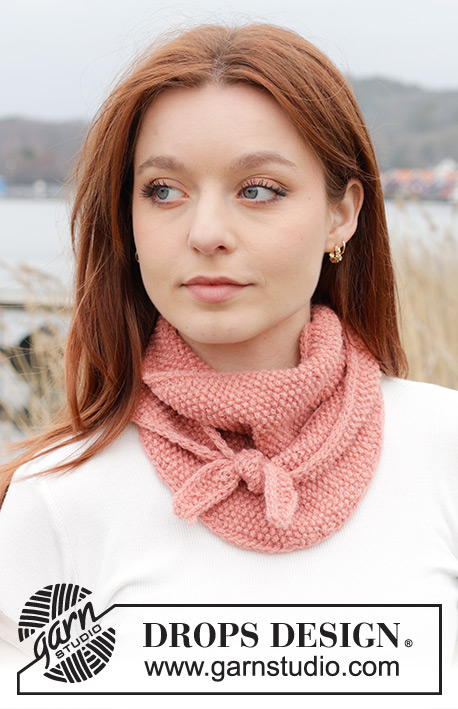

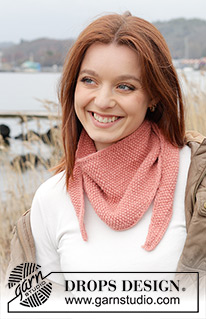
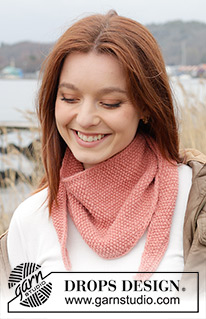
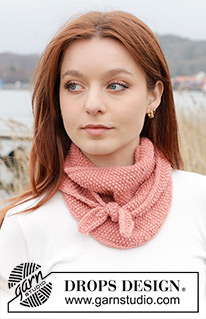


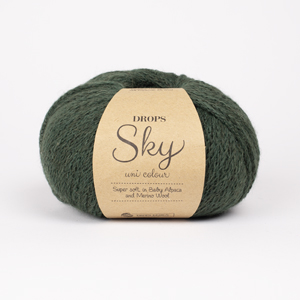
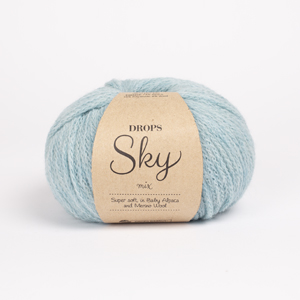
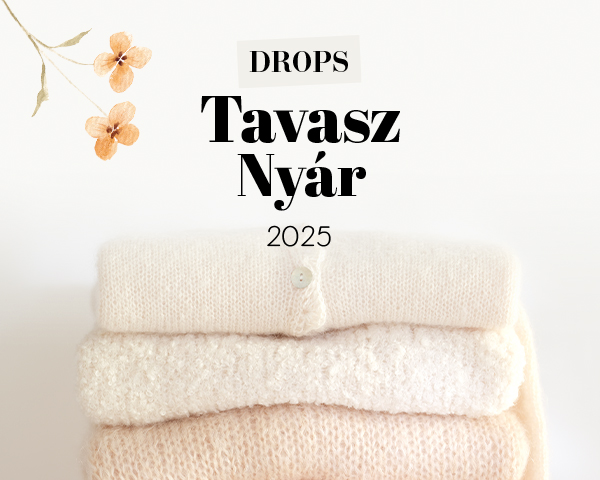
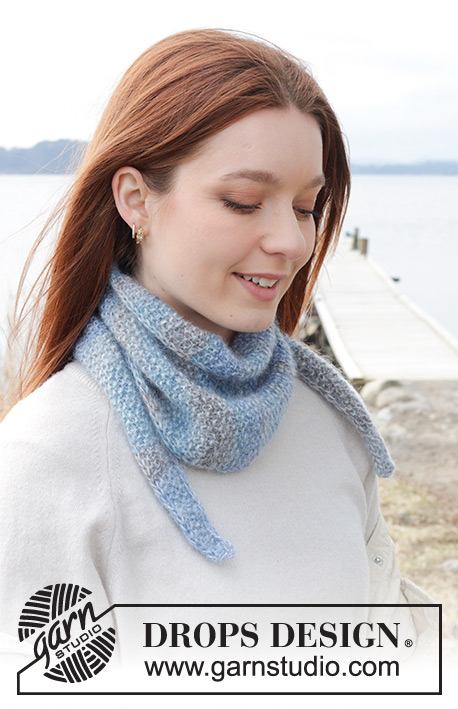



























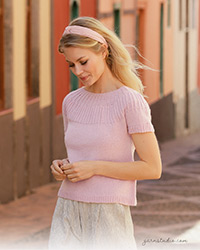
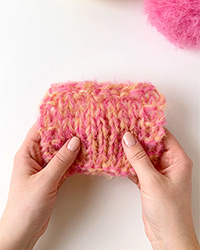
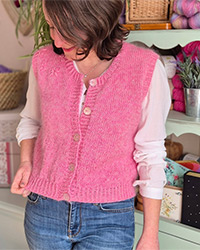
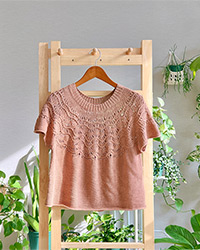
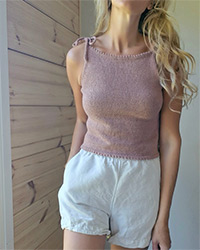

Post a comment to pattern DROPS 242-21
Szívesen vesszük, ha megosztja velünk gondolatait erről a mintáról.
Ha kérdést szeretne feltenni, ügyeljen arra, hogy a megfelelő kategóriát válassza ki, így fegyorsíthatja a válaszadás folyamatát. Það verður að merkja við svæði merktri með *.